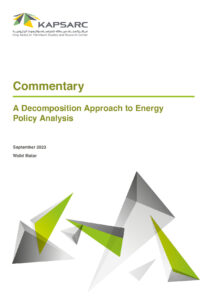Walid works on modeling energy systems. He is developing or has developed the following components of the KAPSARC Energy Model (KEM): electric power generation, oil refining, petrochemicals and fertilizers, cement production, and iron and steel. He is also working on a bottom-up residential electricity use framework that merges microeconomics with the physical laws governing electricity use.

The Economics of Renewable Energy in the Gulf
The Cooperation Council for the Arab States of the Gulf (GCC) has been at the epicenter of global energy markets because of its substantial endowment of hydrocarbons. Yet countries in the region have also stated their intent to be global leaders in renewable energy. This collection explores the drivers for the widespread adoption of renewable energy around the GCC, the need for renewable energy and the policy-economic factors that can create success. https://www.routledge.com/The-Economics-of-Renewable-Energy-in-the-Gulf-1st-Edition/Akhonbay/p/book/9781138351905 Contributors: Ghada Abdulla, Hisham Akhonbay, Abdullah Al-Badi, Walid Ali, Odeh Al-Jayyousi, Imtenan Al-Mubarak, Maha Alsabbagh, Omar Al-Ubaydli, Moiz Bohra, Sylvain Cote, Nasreddine El-Dehaibi, Amro Elshurafa, Bassam Fattouh, Stephen Gitonga, Steve Griffiths, Marwan Khraisheh, Walid Matar, Daniah Orkoubi, Rahmatallah Poudineh, Shreekar Pradhan, Antonio Sanfilippo, Anupama Sen, Marilyn Smith, David Wogan, Lama Yaseen, Karen Young.
17th October 2018






























